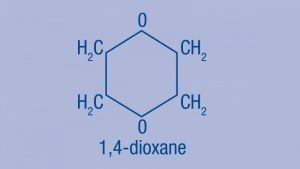The presence of 1,4-dioxane in drinking water has recently been a topic of public concern for residents of Long Island, New York. The United States Environmental Protection Agency (USEPA) classifies 1,4-dioxane as a probable human carcinogen, or a likely cancer-causing substance. According to publicly available water quality reports from 2013 through 2015, elevated concentrations of the substance have been found in 39 water districts on Long Island. Although health based exposure levels have been established, there is currently no federal or New York State drinking water maximum contaminant level (MCL) for 1,4-dioxane.
The USEPA distinguishes an elevated cancer risk in drinking water with 1,4-dioxane concentrations greater than or equal to 0.35 parts per billion (ppb). The New York State Department of Health regulates 1,4-dioxane as an unspecified organic contaminant with a maximum concentration standard of 50 ppb. In addition, the USEPA established a lifetime health advisory of 200 ppb for 1,4-dioxane in drinking water. 1,4-dioxane concentrations exceeding these health-based levels have been detected in some drinking water samples.
Recognizing the health risks and the presence of 1,4-dioxane in Long Island’s drinking water, the New York State Department of Environmental Conservation (NYSDEC) recently called upon the USEPA to establish an official federal drinking water standard for 1,4-dioxane. In a February, 2017 letter to the USEPA, the NYSDEC states that if the USEPA fails to set a maximum contaminant level for 1,4-dioxane “in a timely manner,” the NYSDEC will begin taking steps to establish a New York State MCL for the contaminant.
Several treatment options for 1,4-dioxane are being evaluated by Long Island’s public drinking water suppliers. Advanced oxidation processes are available for aboveground treatment of 1,4-dioxane in water. Other treatment options are adsorption, in which contaminants are removed from a liquid by binding to a solid material, and bioremediation, which uses microorganisms to remove contaminants from groundwater.
Concerned Long Island residents with private wells can use home treatment options to reduce concentrations of this compound, as well as concentrations of many other chemicals of concern. Popular solutions to contamination are water filters produced by NSF International. Water filters that meet the NSF/ANSI Standard 53 are certified to treat drinking water containing volatile organic compounds (including 1,4-dioxane), as well as heavy metals, and inorganic compounds.
If you or your business has any questions regarding 1,4-dioxane contamination in drinking water, as well as testing and treatment options, please call Walden Environmental Engineering (516) 624-7200.

